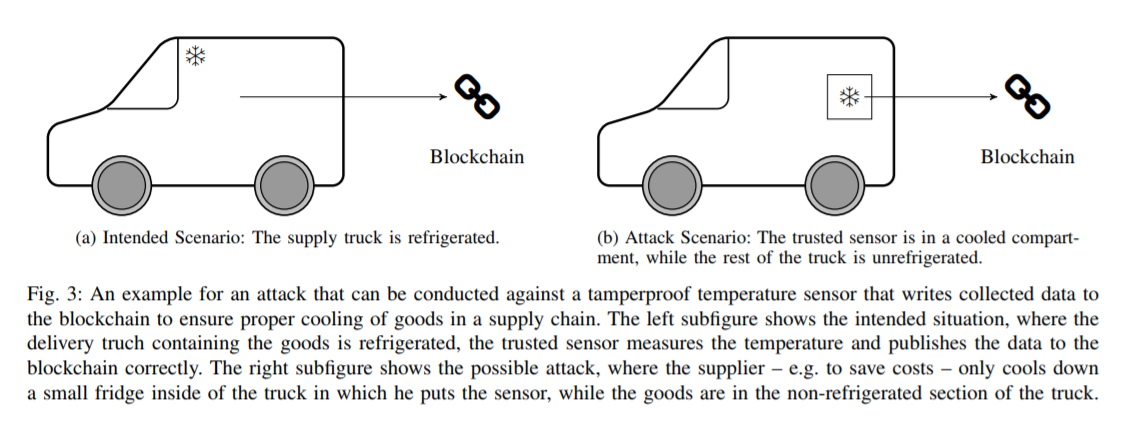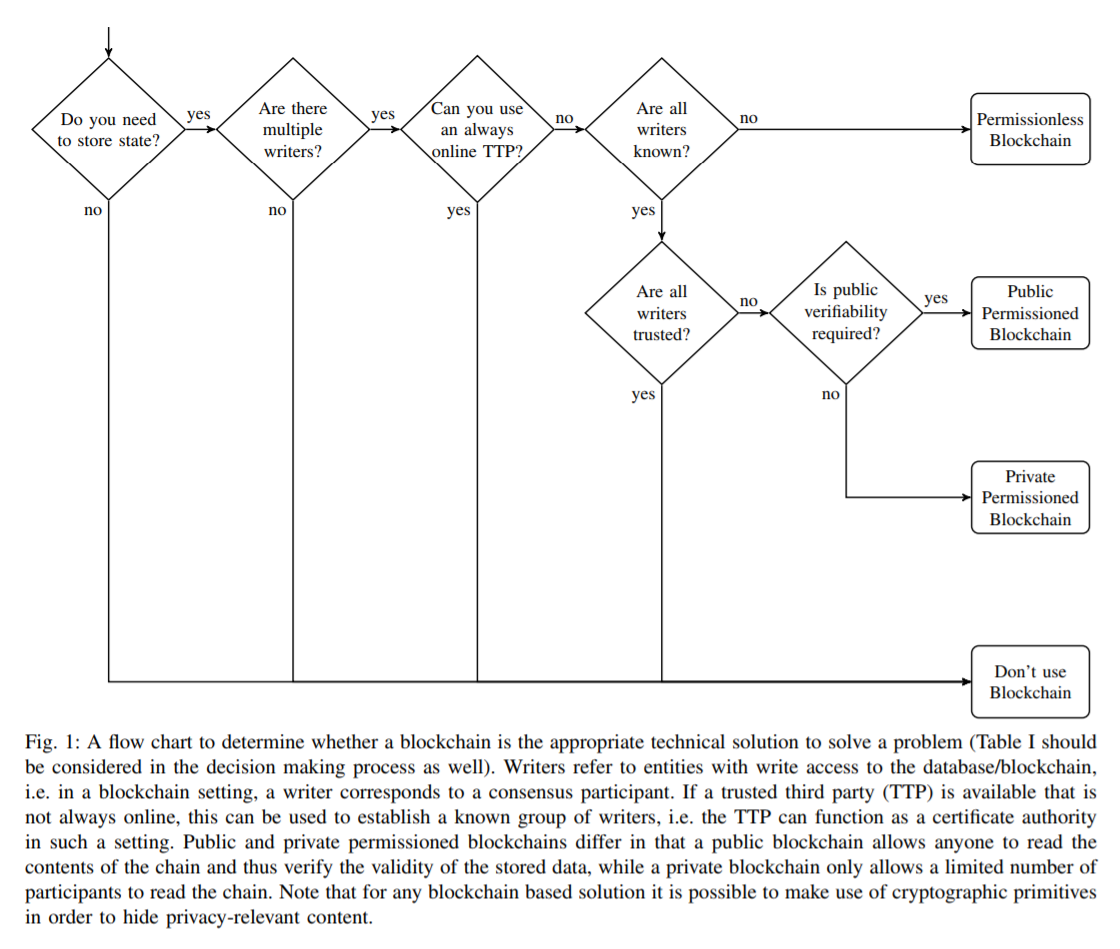Stefaan Verhulst
Paper by Malkiat Thiarai, Sarunkorn Chotvijit
The paper documents the process involved in identifying, accessing and using data held in Birmingham City Council’s social care system for collaborative research with a partner
The findings will include approaches to understanding the data, its structure and accessibility tasks involved in addressing ethical and legal obligations and requirements of the ethical and governance processes….(More)”.
Report by Giulio Coppi and Larissa Fast at ODI (Overseas Development Institute): “Blockchain and the wider category of distributed ledger technologies (DLTs) promise a more transparent, accountable, efficient and secure way of exchanging
Building on these claims, proponents suggest DLTs can address common problems of non-profit organisations and NGOs, such as transparency, efficiency, scale and sustainability. Current humanitarian uses of DLT, illustrated in this report, include financial inclusion, land titling, remittances, improving the transparency of donations, reducing fraud, tracking support to beneficiaries from multiple sources, transforming governance systems, micro-insurance, cross-border transfers, cash programming, grant management and organisational governance.
This report, commissioned by the Global Alliance for Humanitarian Innovation (GAHI), examines current DLT uses by the humanitarian sector to outline lessons for the project, policy and system levels. It offers recommendations to address the challenges that must be overcome before DLTs can be
Ron S. Jarmin at the Journal of Economic Perspectives: “The system of federal economic statistics developed in the 20th century has served the country well, but the current methods for collecting and disseminating these data products are unsustainable. These statistics are heavily reliant on sample surveys. Recently, however, response rates for both household and business surveys have declined, increasing costs and threatening quality. Existing statistical measures, many developed decades ago, may also miss important aspects of our rapidly evolving economy; moreover, they may not be sufficiently accurate, timely, or granular to meet the increasingly complex needs of data users. Meanwhile, the rapid proliferation of online data and more powerful computation make privacy and confidentiality protections more challenging. There is broad agreement on the need to transform government statistical agencies from the
Brookings: “Policymakers under President Obama implemented behaviorally-informed policies to improve college access, completion, and affordability. Given the complexity of the college application process, many of these policies aimed to simplify college and financial aid application processes and reduce informational barriers that students face when evaluating college options. Katharine Meyer and Kelly Ochs Rosinger summarize empirical evidence on these policies and conclude that behaviorally-informed policies play an important role, especially as supplements to (rather than replacements for) broader structural changes. For example, recent changes in the FAFSA filing timeline provided students with more time to complete the form. But this large shift may be more effective in changing behavior when accompanied by informational campaigns and nudges that improve students’ understanding of the new system. Governments and colleges can leverage behavioral science to increase awareness of student support services if more structural policy changes occur to provide the services in the first place….(More)”.
The answer is a dissatisfying “maybe.” Without a convincing story of saving lives, the U.N. is open to attacks by the likes of White House national security adviser John Bolton, who call peacekeeping “unproductive” and push for further cuts to the organization’s already diminished budget. But peacekeeping can—and must—make a case for its own utility, using data already at its fingertips. …(More)”.
Report by Sara Bannerman and Angela Orasch: “This report presents the findings of a national survey of Canadians about smart-city privacy conducted in October and November 2018. Our research questions were: How concerned are Canadians about smart-city privacy? How do these concerns intersect with age, gender, ethnicity, and location? Moreover, what are the expectations of Canadians with regards to their ability to control, use, or opt-out of data collection in
What is a smart city?
A ‘smart city’ adopts digital and data-driven technologies in the planning, management
In 2017, a framework agreement was established between Waterfront Toronto, the organization charged with revitalizing Toronto’s waterfront, and Sidewalk Labs,

Book by Tom Wheeler: “Network revolutions of the past have shaped the present and set the stage for the revolution we are experiencing today
In an era of seemingly instant change, it’s easy to think that today’s revolutions—in communications, business, and many areas of daily life—are unprecedented. Today’s changes may be new and may be happening faster than ever before. But our ancestors at times were just as bewildered by rapid upheavals in what we now call “networks”—the physical links that bind any society together.
In this fascinating book, former FCC chairman Tom Wheeler brings to life the two great network revolutions of the past and uses them to help put in perspective the confusion, uncertainty, and even excitement most people face today. The first big network revolution was the invention of movable-type printing in the fifteenth century. This book, its millions of predecessors, and even such broad trends as the Reformation, the Renaissance, and the multiple scientific revolutions of the past 500 years would not have been possible without that one invention. The second revolution came with the invention of the telegraph early in the nineteenth century. Never before had people been able to communicate over long distances faster than a horse could travel. Along with the development of the world’s first high-speed network—the railroad—the telegraph upended centuries of stability and literally redrew the map of the world.
Wheeler puts these past revolutions into the perspective of
Kim Hart at Axios: “A full 81% of consumers say that in the past year they’ve become more concerned with how companies are using their data, and 87% say they’ve come to believe companies that manage personal data should be more regulated, according to a survey out Monday by IBM’s Institute for Business Value.
Yes, but: They aren’t totally convinced they should care about how their data is being used, and many aren’t taking meaningful action after privacy breaches, according to the survey. Despite increasing data risks, 71% say it’s worth sacrificing privacy given the benefits of technology.Show less
By the numbers:
- 89% say technology companies need to be more transparent about their products
- 75% say that in the past year they’ve become less likely to trust companies with their personal data
- 88% say the emergence of technologies like AI increase the need for clear policies about the use of personal data.
The other side: Despite increasing awareness of privacy and security breaches, most consumers aren’t taking consequential action to protect their personal data.
- Fewer than half (45%) report that they’ve updated privacy settings, and only 16% stopped doing business with an entity due to data misuse
…. (More)”.
Blog Post by Ivan Ivanitskiy: “People are resorting to blockchain for all kinds of reasons these days. Ever since I started doing smart contract security audits in mid-2017, I’ve seen it all. A special category of cases is ‘blockchain use’ that seems logical and beneficial, but actually contains a problem that then spreads from one startup to another. I am going to give some examples of such problems and ineffective solutions so that you (developer/customer/investor) know what to do when somebody offers you to use blockchain this way.
1. Supply chain management
Let’s say you ordered some goods, and a carrier guarantees to maintain certain transportation conditions, such as keeping your goods cold. A proposed solution is to install a sensor in a truck that will monitor fridge temperature and regularly transmit the data to the blockchain. This way, you can make sure that the promised conditions are met along the entire route.
The problem here is not blockchain, but rather sensor, related. Being part of the physical world, the sensor is easy to fool. For example, a malicious carrier might only cool down a small fridge inside the truck in which they put the sensor, while leaving the goods in the non-refrigerated section of the truck to save costs.

I would describe this problem as:
Blockchain is not Internet of Things (IOT).
We will return to this statement a few more times. Even though blockchain does not allow for modification of data, it cannot ensure such data is correct.The only exception is on-chain transactions, when the system does not need the real world, with all necessary information already being within the blockchain, thus allowing the system to verify data (e.g. that an address has enough funds to proceed with a transaction).
Applications that submit information to a blockchain from the outside are called “oracles” (see article ‘Oracles, or Why Smart Contracts Haven’t Changed the World Yet?’ by Alexander Drygin). Until a solution to the problem with oracles is found, any attempt at blockchain-based supply chain management, like the case above, is as pointless as trying to design a plane without first developing a reliable engine.
I borrowed the fridge case from the article ‘Do you Need Blockchain’ by Karl Wüst and Arthur Gervais. I highly recommend reading this article and paying particular attention to the following diagram:

2. Object authenticity guarantee
Even though this case is similar to the previous one, I would like to single it out as it is presented in a different wrapper.
Say we make unique and expensive goods, such as watches, wines, or cars. We want our customers to be absolutely sure they are buying something made by us, so we link our wine bottle to a token supported by blockchain and put a QR code on it. Now, every step of the way (from manufacturer, to carrier, to store, to customer) is confirmed by a separate blockchain transaction and the customer can track their bottle online.
However, this system is vulnerable to a very simple threat: a dishonest seller can make a copy of a real bottle with a token, fill it with wine of lower quality, and either steal your expensive wine or sell it to someone who does not care about tokens. Why is it so easy? That’s right! Because…(More)”
The theory predicts higher support for the protest party when individuals identify more strongly with their local community and when a higher share of community members are aggrieved. We test this theory using longitudinal data on British households and exploiting the emergence of the UK Independence Party (UKIP) in Great Britain in the 2010 and 2015 national elections. Empirical findings robustly support theoretical predictions. The psychological mechanism postulated by our theory survives the controls for alternative non-behavioral mechanisms (e.g. information sharing or political activism in local communities)….(More)”.